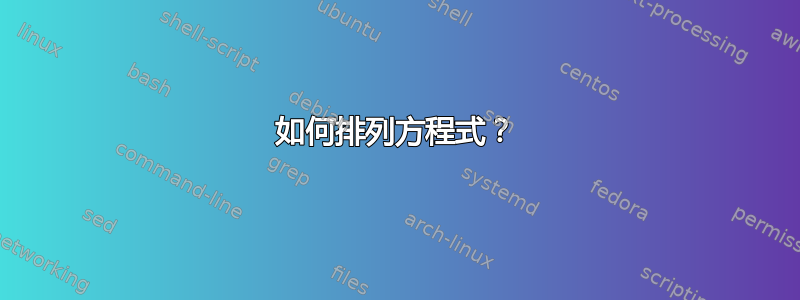
这是用于小册子的,其中必须将等式放在圆圈旁边的最佳位置以使其看起来美观。
这是鳕鱼
\documentclass[letter, 11pt]{scrartcl}
\usepackage[utf8]{inputenc}
\usepackage[sexy]{evan}
\usepackage[left=1in,right=1in,top=1.2in,bottom=1.3in]{geometry}
\usepackage[utf8]{inputenc}
\usepackage[sexy]{evan}
\usepackage{url}
\usepackage{verbatim}
\usepackage{tikz}
\usetikzlibrary{intersections,decorations.text}
\definecolor{c1}{RGB}{62, 97, 127}
\definecolor{c2}{RGB}{104, 182, 182}
\definecolor{c3}{RGB}{107, 190, 190}
\definecolor{c4}{RGB}{100, 172, 174}
\usepackage{tikzlings}
\usepackage{tikzducks}
\usepackage[left=1in,right=1in]{geometry}
\usepackage{xcolor,rotating,picture,lipsum}
\usepackage{hyperref}
\usepackage{amsmath}
\hypersetup{
colorlinks=true,
linkcolor=,
filecolor=magenta,
urlcolor=,
}
\urlstyle{same}
\usepackage{csquotes}
\usepackage{tgpagella}
\usepackage{epigraph}
\usepackage{ulem}
\usepackage{mathpazo}
\usepackage{mathtools}
\DeclarePairedDelimiter{\ceil}{\lceil}{\rceil}
\DeclareMathOperator{\ordinal}{ord}
\setlength{\parindent}{2em}
\setlength{\parskip}{1em}
\renewcommand{\baselinestretch}{1.1}
\begin{document}
\begin{picture}(10, 11)
\scalebox{3}{$\displaystyle e^{i\pi}+1=0$}
\end{picture}
\thispagestyle{empty}
\begin{tikzpicture}[overlay,remember picture,font=\sffamily\bfseries]
\draw[very thick,c4,name path=big arc] ([xshift=-2mm]current page.north) arc(150:285:11)
coordinate[pos=0.225] (x0);
\begin{scope}
\clip ([xshift=-2mm]current page.north) arc(150:285:11) --(current page.north
east);
\fill[c4!50,opacity=0.25] ([xshift=4.55cm]x0) circle (4.55);
\fill[c4!50,opacity=0.25] ([xshift=3.4cm]x0) circle (3.4);
\fill[c4!50,opacity=0.25] ([xshift=2.25cm]x0) circle (2.25);
\draw[very thick,c4!50] (x0) arc(-90:30:6.5);
\draw[very thick,c4] (x0) arc(90:-30:8.75);
\draw[very thick,c4!50,name path=arc1] (x0) arc(90:-90:4.675);
\draw[very thick,c4!50] (x0) arc(90:-90:2.875);
\path[name intersections={of=big arc and arc1,by=x1}];
\draw[very thick,c4,name path=arc2] (x1) arc(135:-20:4.75);
\draw[very thick,c4!50] (x1) arc(135:-20:8.75);
\path[name intersections={of=big arc and arc2,by={aux,x2}}];
\draw[very thick,c4!50] (x2) arc(180:50:2.25);
\end{scope}
\path[decoration={text along path,text color=c4,
raise = -2.8ex,
text along path,
%text = {|\sffamily\bfseries|02/18/2019},
text align = center,
},
decorate
] ([xshift=-2mm]current page.north) arc(150:245:11);
%
\begin{scope}
\path[clip,postaction={fill=c3}]
([xshift=2cm,yshift=-8cm]current page.center) rectangle ++ (4.2,7.7);
\fill[c2] ([xshift=0.5cm,yshift=-8cm]current page.center)
([xshift=0.5cm,yshift=-8cm]current page.center) arc(180:60:2)
|- ++ (-3,6) --cycle;
\draw[very thick,c4] ([xshift=-1.5cm,yshift=-8cm]current page.center)
arc(180:0:2);
\draw[very thick,c4] ([xshift=0.5cm,yshift=-8cm]current page.center)
arc(180:0:2);
\draw[very thick,c4] ([xshift=2.5cm,yshift=-8cm]current page.center)
arc(180:0:2);
\draw[very thick,c4] ([xshift=4.5cm,yshift=-8cm]current page.center)
arc(180:0:2);
\fill[white] ([xshift=2.5cm,yshift=-8cm]current page.center) +(60:2) circle(1.5mm)
node[above right=2mm]{$\displaystyle\rho=\frac{1+\sqrt{-3}}{2}$};
\end{scope}
%
\fill[c1] ([xshift=2cm,yshift=-8cm]current page.center) rectangle ++ (-12.7,7.7);
\node[text=white,anchor=west,scale=5,inner sep=0pt] at
([xshift=-8cm,yshift=-3.25cm]current page.center) {GLCGM};
\node[text=white,anchor=west,scale=2.0,inner sep=0pt] at
([xshift=-9cm,yshift=-6cm]current page.center) {TFP x THREE STANCHION};
%
\draw[gray,line width=5mm]
([xshift=2mm,yshift=-1mm]current page.south west) rectangle ([xshift=-2mm,yshift=1mm]current
page.north east);
\end{tikzpicture}
\end{document}
这是我编译后得到的结果
我需要将方程式放置在与所有圆的相交点对齐的位置,并使其更具装饰性,我该怎么做呢?
答案1
替换图片为
\node [left = of x0] {\scalebox{3}{$\displaystyle e^{i\pi}+1=0$}};
(也使用\usetikzlibrary{positioning})
\documentclass[letter, 11pt]{scrartcl}
%\usepackage[utf8]{inputenc}
%\usepackage[sexy]{evan}
\usepackage[left=1in,right=1in,top=1.2in,bottom=1.3in]{geometry}
\usepackage[utf8]{inputenc}
%\usepackage[sexy]{evan}
\usepackage{url}
\usepackage{verbatim}
\usepackage{tikz}
\usetikzlibrary{intersections,decorations.text}
\definecolor{c1}{RGB}{62, 97, 127}
\definecolor{c2}{RGB}{104, 182, 182}
\definecolor{c3}{RGB}{107, 190, 190}
\definecolor{c4}{RGB}{100, 172, 174}
\usepackage{tikzlings}
\usepackage{tikzducks}
\usepackage[left=1in,right=1in]{geometry}
\usepackage{xcolor,rotating,picture,lipsum}
\usepackage{hyperref}
\usepackage{amsmath}
\hypersetup{
colorlinks=true,
linkcolor=,
filecolor=magenta,
urlcolor=,
}
\urlstyle{same}
\usepackage{csquotes}
\usepackage{tgpagella}
\usepackage{epigraph}
\usepackage{ulem}
\usepackage{mathpazo}
\usepackage{mathtools}
\DeclarePairedDelimiter{\ceil}{\lceil}{\rceil}
\DeclareMathOperator{\ordinal}{ord}
\setlength{\parindent}{2em}
\setlength{\parskip}{1em}
\renewcommand{\baselinestretch}{1.1}
\usetikzlibrary{positioning}% added <<<<<<<<<<<<<
\begin{document}
% \begin{picture}(10, 11)
% \scalebox{3}{$\displaystyle e^{i\pi}+1=0$} %%% remove <<<<<<<<<<<<<<<<
% \end{picture}
\thispagestyle{empty}
\begin{tikzpicture}[overlay,remember picture,font=\sffamily\bfseries]
\draw[very thick,c4,name path=big arc] ([xshift=-2mm]current page.north) arc(150:285:11)
coordinate[pos=0.225] (x0);
\begin{scope}
\node [left = of x0] {\scalebox{3}{$\displaystyle e^{i\pi}+1=0$}}; % added <<<<<<<<<<
\clip ([xshift=-2mm]current page.north) arc(150:285:11) --(current page.north
east);
\fill[c4!50,opacity=0.25] ([xshift=4.55cm]x0) circle (4.55);
\fill[c4!50,opacity=0.25] ([xshift=3.4cm]x0) circle (3.4);
\fill[c4!50,opacity=0.25] ([xshift=2.25cm]x0) circle (2.25);
\draw[very thick,c4!50] (x0) arc(-90:30:6.5);
\draw[very thick,c4] (x0) arc(90:-30:8.75);
\draw[very thick,c4!50,name path=arc1] (x0) arc(90:-90:4.675);
\draw[very thick,c4!50] (x0) arc(90:-90:2.875);
\path[name intersections={of=big arc and arc1,by=x1}];
\draw[very thick,c4,name path=arc2] (x1) arc(135:-20:4.75);
\draw[very thick,c4!50] (x1) arc(135:-20:8.75);
\path[name intersections={of=big arc and arc2,by={aux,x2}}];
\draw[very thick,c4!50] (x2) arc(180:50:2.25);
\end{scope}
\path[decoration={text along path,text color=c4,
raise = -2.8ex,
text along path,
%text = {|\sffamily\bfseries|02/18/2019},
text align = center,
},
decorate
] ([xshift=-2mm]current page.north) arc(150:245:11);
%
\begin{scope}
\path[clip,postaction={fill=c3}]
([xshift=2cm,yshift=-8cm]current page.center) rectangle ++ (4.2,7.7);
\fill[c2] ([xshift=0.5cm,yshift=-8cm]current page.center)
([xshift=0.5cm,yshift=-8cm]current page.center) arc(180:60:2)
|- ++ (-3,6) --cycle;
\draw[very thick,c4] ([xshift=-1.5cm,yshift=-8cm]current page.center)
arc(180:0:2);
\draw[very thick,c4] ([xshift=0.5cm,yshift=-8cm]current page.center)
arc(180:0:2);
\draw[very thick,c4] ([xshift=2.5cm,yshift=-8cm]current page.center)
arc(180:0:2);
\draw[very thick,c4] ([xshift=4.5cm,yshift=-8cm]current page.center)
arc(180:0:2);
\fill[white] ([xshift=2.5cm,yshift=-8cm]current page.center) +(60:2) circle(1.5mm)
node[above right=2mm]{$\displaystyle\rho=\frac{1+\sqrt{-3}}{2}$};
\end{scope}
%
\fill[c1] ([xshift=2cm,yshift=-8cm]current page.center) rectangle ++ (-12.7,7.7);
\node[text=white,anchor=west,scale=5,inner sep=0pt] at
([xshift=-8cm,yshift=-3.25cm]current page.center) {GLCGM};
\node[text=white,anchor=west,scale=2.0,inner sep=0pt] at
([xshift=-9cm,yshift=-6cm]current page.center) {TFP x THREE STANCHION};
%
\draw[gray,line width=5mm]
([xshift=2mm,yshift=-1mm]current page.south west) rectangle ([xshift=-2mm,yshift=1mm]current
page.north east);
\end{tikzpicture}
\end{document}
选项
@Edson Marcon 建议使用
\node [left = of x0, text= c4] {\scalebox{3}{$\displaystyle e^{i\pi}+1=0$}};





